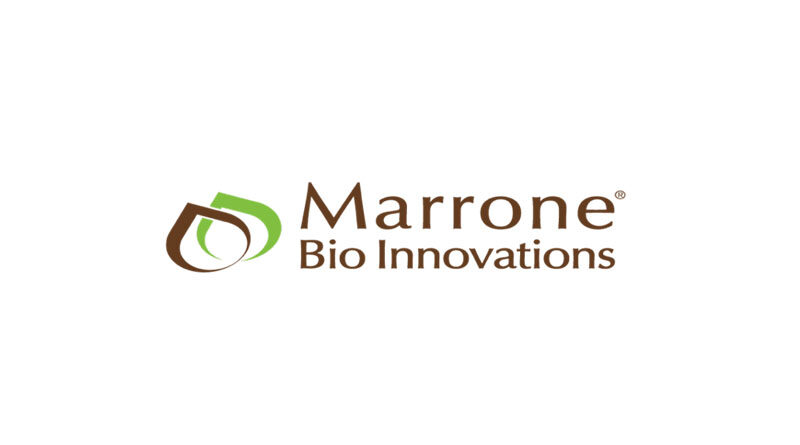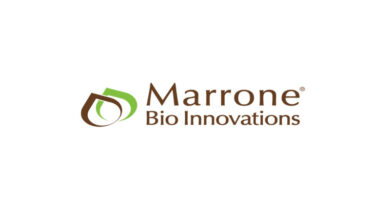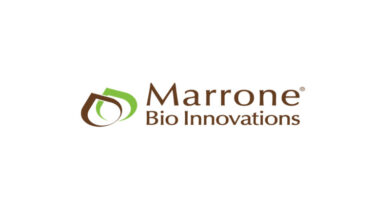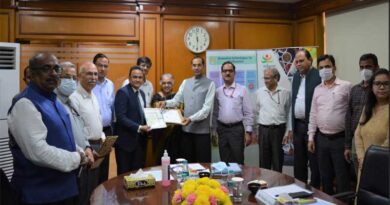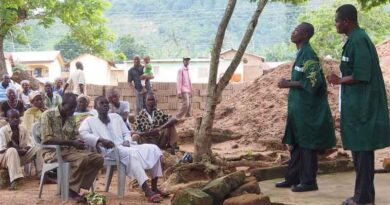Marrone Bio Achieves Excellent Climate Impact Score for Venerate® XC Bioinsecticide
18 November 2021, California: Marrone Bio Innovations, Inc., an international leader in sustainable bioprotection and plant health solutions published today their independent climate impact product assessment on Venerate® XC Bioinsecticide, scoring a 8.6 out of 10. The analysis evaluated the life-cycle inputs and impacts of Venerate XC per acre on the following: soil, aquatic and human toxicity, ecosystem impact, harmful materials, greenhouse gas (GHG) emissions and carbon return on investment (CROI).
“MBI is committed to providing farmers with the most effective products that not only produce healthier, more robust crops, but also meet the increasing demand for more sustainably grown goods,” stated Kevin Helash, chief executive officer for Marrone Bio Innovations. “This third party analysis provides an excellent opportunity to showcase the value we bring to all stakeholders.”
One of the key learnings from this product analysis was the amount of electricity and steam required to produce Venerate XC. The result was a decision to switch Marrone Bio’s manufacturing facility in Bangor, Michigan to all-renewable energy this fall, a move that reduced the amount of greenhouse gas emissions the product generates by 32%.
A new element to this study was the addition of a soil health metric; a key indicator of overall crop vigor and an area of focus in present-day sustainable farming systems and regenerative agricultural practices. The analysis showed Venerate XC is non-toxic to earthworms and other soil-dwelling beneficial organisms, and is readily biodegradable in the soil. The product’s low toxicity is also demonstrated in its safety to humans and aquatic life, key attributes that allowed Venerate XC to score an 8.6 out of 10 on climate impact.
Venerate XC Bioinsecticide, a top revenue-generator for Marrone Bio, is a novel, broad spectrum proprietary microbe (Burkholderia rinojensis strain A396) that is active against a wide range of yield-robbing insects and mites. It is approved for use in the U.S. and internationally on a wide range of crops including almonds, grapes, strawberries, pome fruit and leafy greens. Marrone Bio anticipates that this climate impact assessment and pending regulatory approvals in a number of countries, including Brazil, will allow Venerate XC to gain market share globally and serve as a key contributor to revenue growth in the coming years.
“The future of agriculture is dependent not only on the best technology and most economical farming practices, but also on our ability to preserve and protect the natural resources in which our businesses rely,” added Keith Pitts, chief sustainability officer for Marrone Bio Innovations. “Measuring our environmental impact and understanding how it can improve our manufacturing processes and product performance, while adding value throughout the industry, is a key objective of commissioning these third-party climate impact assessments. We want to lead the way in providing innovative agriculture solutions that help farmers run a more sustainable and profitable business while also becoming suppliers of choice to the customers they serve.”
This is the second climate impact study Marrone Bio has conducted with the help of Boundless Impact Research & Analytics. The first product analysis was on the company’s BIOSt Nematicide seed treatment that scored an impressive 9.8 out of 10, reducing greenhouse gas (GHG) emissions by 85 percent in soybeans and 87 percent in corn compared with conventional pesticides.
Research Methodology Overview
Boundless researched the material, energy and performance characteristics for Venerate XC Bioinsecticide based on detailed information provided by MBI that describes the material components and energy inputs. At the core of the methodology is a life-cycle assessment (LCA) model for a kilogram of Venerate XC Bioinsecticide. The functional unit (FU) for this LCA was a million seeds treated with nematicide. Boundless employed the IPCC 2013 methodology.

